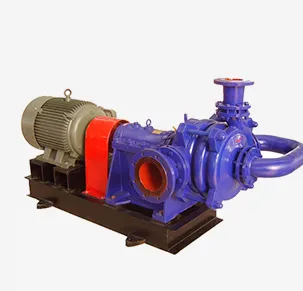Gujarati
- Afrikaans
- Albanian
- Amharic
- Arabic
- Armenian
- Azerbaijani
- Basque
- Belarusian
- Bengali
- Bosnian
- Bulgarian
- Catalan
- Cebuano
- Corsican
- Croatian
- Czech
- Danish
- Dutch
- English
- Esperanto
- Estonian
- Finnish
- French
- Frisian
- Galician
- Georgian
- German
- Greek
- Gujarati
- Haitian Creole
- hausa
- hawaiian
- Hebrew
- Hindi
- Miao
- Hungarian
- Icelandic
- igbo
- Indonesian
- irish
- Italian
- Japanese
- Javanese
- Kannada
- kazakh
- Khmer
- Rwandese
- Korean
- Kurdish
- Kyrgyz
- Lao
- Latin
- Latvian
- Lithuanian
- Luxembourgish
- Macedonian
- Malgashi
- Malay
- Malayalam
- Maltese
- Maori
- Marathi
- Mongolian
- Myanmar
- Nepali
- Norwegian
- Norwegian
- Occitan
- Pashto
- Persian
- Polish
- Portuguese
- Punjabi
- Romanian
- Russian
- Samoan
- Scottish Gaelic
- Serbian
- Sesotho
- Shona
- Sindhi
- Sinhala
- Slovak
- Slovenian
- Somali
- Spanish
- Sundanese
- Swahili
- Swedish
- Tagalog
- Tajik
- Tamil
- Tatar
- Telugu
- Thai
- Turkish
- Turkmen
- Ukrainian
- Urdu
- Uighur
- Uzbek
- Vietnamese
- Welsh
- Bantu
- Yiddish
- Yoruba
- Zulu
Telephone: +86 13120555503
Email: frank@cypump.com
નવેમ્બર . 15, 2024 09:01 Back to list
submersible mixed-flow pumps an in-depth overview and ...
Submersible Mixed-Flow Pumps An In-Depth Overview
Submersible mixed-flow pumps are a critical component in various industrial applications, ranging from municipal water supply systems to agricultural irrigation and wastewater treatment. These pumps are designed to operate submerged in the fluid they are pumping, which enhances their efficiency and reduces the need for complex suction piping. This article provides an in-depth overview of submersible mixed-flow pumps, focusing on their design, operation, advantages, and applications.
Design and Mechanism
The submersible mixed-flow pump combines features of both centrifugal and axial flow pumps. Its design incorporates an impeller with angled blades that facilitate the movement of fluid both radially and axially. This dual action enables the pump to handle substantial volumes of liquid efficiently while maintaining relatively low energy consumption. Constructed typically from corrosion-resistant materials, these pumps are built to withstand harsh environments, making them suitable for various applications.
Submersible mixed-flow pumps utilize a sealed motor that operates underwater, preventing the infiltration of water into the electrical components. The motor drives the impeller, generating high flow rates and enabling the pump to lift water to considerable heights. The integrated structure allows for a compact installation, making it ideal for locations with space constraints.
Advantages
1. Efficiency One of the primary advantages of submersible mixed-flow pumps is their energy efficiency. The submerged design minimizes losses due to friction and turbulence, allowing for higher flow rates with lower energy requirements.
3. Space-Saving Design With no need for additional suction pipes, submersible pumps occupy less surface area, making them ideal for locations where installation space is limited.
4. Versatility These pumps can handle a wide range of fluids, from clean water to those containing solids, making them incredibly versatile for different applications.
submersible mixed-flow pumps an in-depth overview and ...

5. Lower Maintenance Submersible pumps typically require less maintenance than surface pumps. The design prevents common issues like cavitation, and since they are submerged, they are less exposed to external elements that might cause wear and tear.
Applications
Submersible mixed-flow pumps find applications in several fields
- Municipal Water Supply These pumps are widely used to extract groundwater for municipal water supply systems, providing a reliable and efficient method for meeting the water needs of cities and towns.
- Irrigation In agriculture, they are employed to pump water from wells or reservoirs to irrigate crops, ensuring that farmers can maintain optimal growing conditions.
- Wastewater Treatment Submersible mixed-flow pumps play a crucial role in transporting sewage and wastewater to treatment facilities. Their robust design enables them to handle solids and debris typically found in sewage.
- Flood Control They are also utilized for dewatering applications during floods or storm events. Their ability to pump large volumes rapidly makes them instrumental in mitigating flooding issues.
Conclusion
In summary, submersible mixed-flow pumps represent a highly efficient and versatile solution for various pumping needs. Their design offers several advantages, such as reduced energy consumption, lower noise levels, and easier maintenance. As industries continue to evolve and the demand for efficient water management solutions grows, submersible mixed-flow pumps will undoubtedly remain a vital technology in addressing these challenges. Whether in municipal, agricultural, or industrial applications, their robust performance and reliability will continue to serve critical roles in the infrastructure of modern society.
-
Heavy-Duty Mining Sludge Pumps - Wear-Resistant Slurry Handling
NewsAug.02,2025
-
Horizontal Split Case Pump with GPT-4 Turbo | High Efficiency
NewsAug.01,2025
-
ISG Series Pipeline Pump - Chi Yuan Pumps | High Efficiency, Durable Design
NewsAug.01,2025
-
Advanced Flue Gas Desulfurization Pump with GPT-4 Turbo | Durable & Efficient
NewsJul.31,2025
-
ISG Series Vertical Pipeline Pump - Chi Yuan Pumps | Advanced Hydraulic Design&Durable Construction
NewsJul.31,2025
-
ISG Series Vertical Pipeline Pump - Chi Yuan Pumps | Energy Efficient & Low Noise
NewsJul.31,2025










